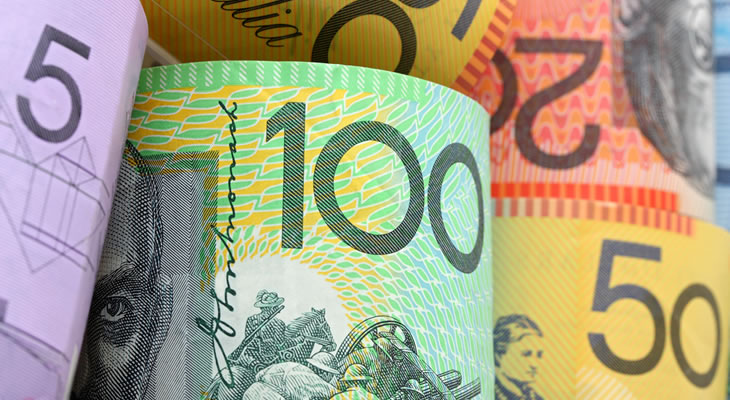- ILO Unemployment Rate unexpectedly fell to eleven-year low – Pound rallied strongly on signs of tighter job market
- NAB Business Confidence Index weakened in second quarter – ‘Aussie’ climbed thanks to bullishness of wider survey
- UK Retail sales softer than anticipated in June – GBP AUD exchange rate slumped due to weaker consumer confidence
- July PMIs predicted to diminish Sterling strength further – Economic activity expected to have weakened sharply in the wake of the Brexit vote
The Pound was unable to maintain its stronger form on Thursday thanks to weak Retail Sales, prompting the GBP AUD exchange rate to return to a downtrend.
Pound (GBP) Exchange Rate Strengthened as UK Unemployment Fell to Eleven-Year Low
Despite worries about the outlook of the UK economy the Pound (GBP) went on a bullish run on Wednesday, buoyed by the latest raft of domestic jobs data. Markets were generally encouraged to find that the ILO Unemployment Rate had unexpectedly dipped to 4.9% in the three months to May, hitting its lowest level since late 2005. As Derek Halpenny, European Head of GMR at MUFG, noted:
‘The good news on hiring is that at least as of May, the labour market was strong. The 176k increase in employment in the three months to May was much stronger than the 55k increase in April and confirmed a stronger economy going into the Brexit vote.’
This suggested that economic conditions had been relatively firm ahead of the referendum, which was particularly encouraging considering recent signs that job creation has not significantly slowed in the wake of the Brexit vote. As a result the Pound to Australian Dollar (GBP AUD) exchange rate strengthened sharply, climbing to a three-week high of 1.7756 in spite of accompanying poor wage growth.
Meanwhile, relatively muted risk appetite meant there was little to support the Australian Dollar (AUD) against rivals. Following a spate of positive US data investors had been inclined to bring forward their predictions for the next Federal Reserve interest rate hike, with the strength of the ‘Greenback’ (USD) weighing heavily on the antipodean currency.
Australian Dollar (AUD) Boosted by NAB Business Survey despite Weaker Confidence Index
Overnight the appeal of the ‘Aussie’ weakened further in response to the second quarter NAB Business Confidence Index, which slipped from 4 to 2. This slump in sentiment seemed to point towards a greater slowdown in the domestic economy, denting the appeal of the Australian Dollar further. However, the bearish impact of the result was muted by more positive aspects of the NAB survey, as researchers with NAB noted:
‘Leading indicators also suggest the outlook remains positive, although momentum has eased a little. Despite that, firms are continuing to suggest quite strong investment intentions for the next 12 months, consistent with the steady rise in capacity utilisation rates, while near-term employment intentions improved and longer-term employment intentions remained relatively solid.’
The GBP AUD exchange rate was also pushed onto a downtrend on Thursday morning by investor nerves ahead of the June Retail Sales data. Sterling promptly weakened when sales were found to have dipped further than anticipated, slowing from 5.2% to 3.9% on the year. While the bulk of the data was from the pre-referendum period, and a lot of the weakness was blamed on bad weather and clothing sales, this was not enough to prevent the Pound trending lower against rivals in response.
GBP AUD Exchange Rate Forecast: Weak UK PMIs to Increase Downside Pressure on Pound
Greater downside pressure is likely for the Pound on Friday, with the release of the UK Manufacturing, Services and Composite PMIs for July. All three measures are predicted to fall back below the neutral baseline of 50, a slide that would indicate a severe slowing in the domestic economy as a result of the Brexit vote. As these will be the first major ecostats compiled in the aftermath of the shock referendum result the market reaction is likely to be pronounced, with the GBP AUD exchange rate expected to extend its slump.
Wider market sentiment will remain the primary driver behind the ‘Aussie’ ahead of the weekend, with any increase in risk appetite set to boost the commodity-correlated currency further. The impact of the Brexit on the Australian economy has been assessed as being minimal, due to the political and economic contagion being largely confined to Europe. Consequently any Brexit-based developments are likely to allow the Australian Dollar to extend its gains against the Pound, particularly if markets continue to dismiss the likelihood of an imminent interest rate hike from the Federal Reserve.
Current GBP, AUD Exchange Rates
At the time of writing, the Pound to Australian Dollar (GBP AUD) exchange rate was slumped around 1.7618, while the Australian Dollar to Pound (AUD GBP) pairing was making gains in the region of 0.5675.


Comments are closed.